During our visit to Japan for the Tokyo Game Show, we seized the opportunity to meet and engage in conversation with former veteran SEGA Designers, Akihito Hiroyoshi—renowned as the character designer for classic SEGA AM2 arcade games such as Arabian Fight and Virtua Cop—and Yumiko Miyabe, the former art director for the Space Channel 5 series.
These interviews unveiled insights into their early lives, careers during their tenure at SEGA, and personal hobbies. By clicking the link, you can delve into the interviews and explore behind-the-scenes artwork from the games they passionately crafted during their time at SEGA.
Additionally, the interviews are available in video format, with links provided here for Akihito Hiroyoshi and Yumiko Miyabe. A special acknowledgment goes to our fellow writer, Dakota, for video recording, as well as SEGA fans, Martin Hemmingway and Scott Hamby for translating the interviews. *Please note: images provided in the interview are copyrighted and may not be reproduced without permission*
Akihito Hiroyoshi Interview
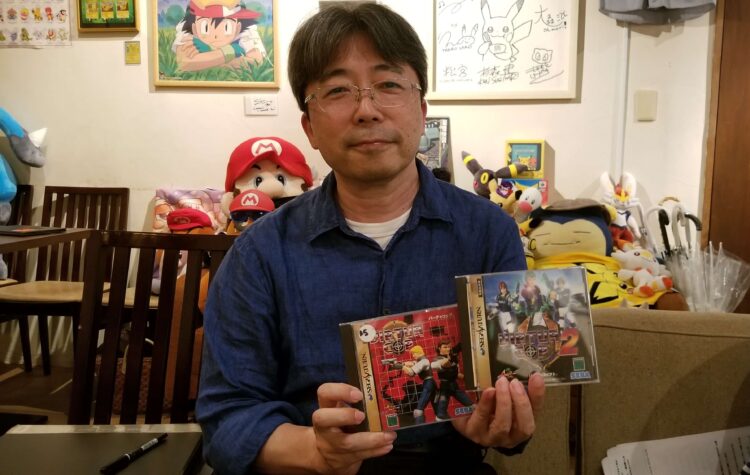
Could you introduce yourself by name?
AH: Nice to meet you. My name is Akihito Hiroyoshi. I worked as a graphic designer at Sega from 1988 to 2009. My department was AM2 and I was mainly involved in the production of arcade games.
What were your hobbies and goals before joining the video game industry?
AH: Drawing pictures. But it was mainly cartoon-like characters.
What inspired you to become a designer?
AH: I guess it was from the fact that I wanted to work in a direction that I liked anyway, and that’s what I did when I was looking for a job.
How did you join SEGA? What was the experience like when working there in the beginning?
AH: In fact, I wanted to design toys and tried to find a job, but I failed at every job I tried. I was lucky to get an interview because Sega also made toys, and I was able to join the company.
I was lucky enough to be able to join the company.
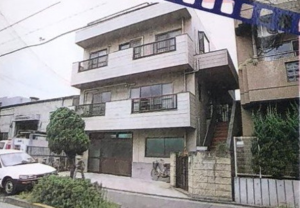
For some reason, I was assigned to the video game department instead of the toy department. I was assigned to the department of Yu Suzuki, who was still producing “POWER DRIFT” under the name of “Studio128” at that time.
Could you tell us your experience working on Arabian Fight? What was the process like? Were there any fun aspects or challenges when working on the classic AM2 beat em up?
AH: At that time, fighting game know-how had not yet been established in AM2, so we were very experimental in our production. I was very hands-on in the production of the game. I was responsible for creating character designs from the planner’s rough drafts, creating motion patterns for the player characters, correcting dots, and creating event scenes and stop-motion drawings.
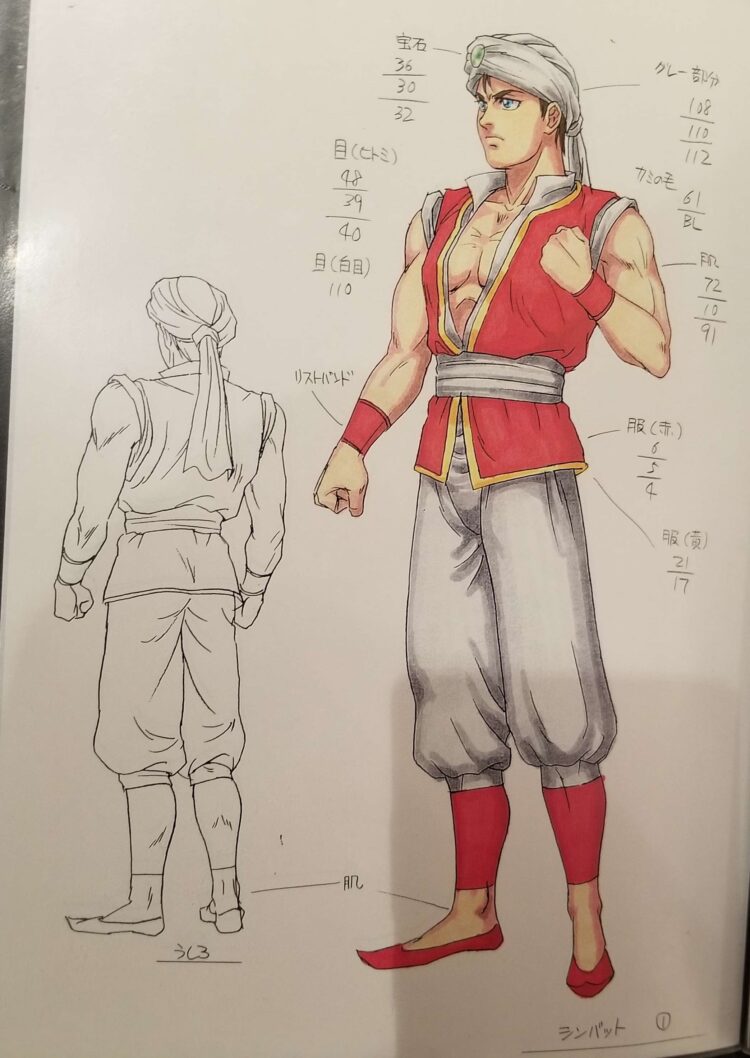
The special move animations were created by an outside animation studio. It was the first time for me to work with an outside animation studio, so it was fun to see the finished animations.
The characters you have designed for SEGA seem like a good fit for manga stories. Have you ever thought of becoming a manga artist at one point?
AH: Thank you very much. (laughs) Actually, when I was a student, I had a faint admiration for cartoonists and animators. However, I was not confident in my talent I was wondering if I could find a job in a different way, and I was lucky enough to get a job as a graphic designer for video games.
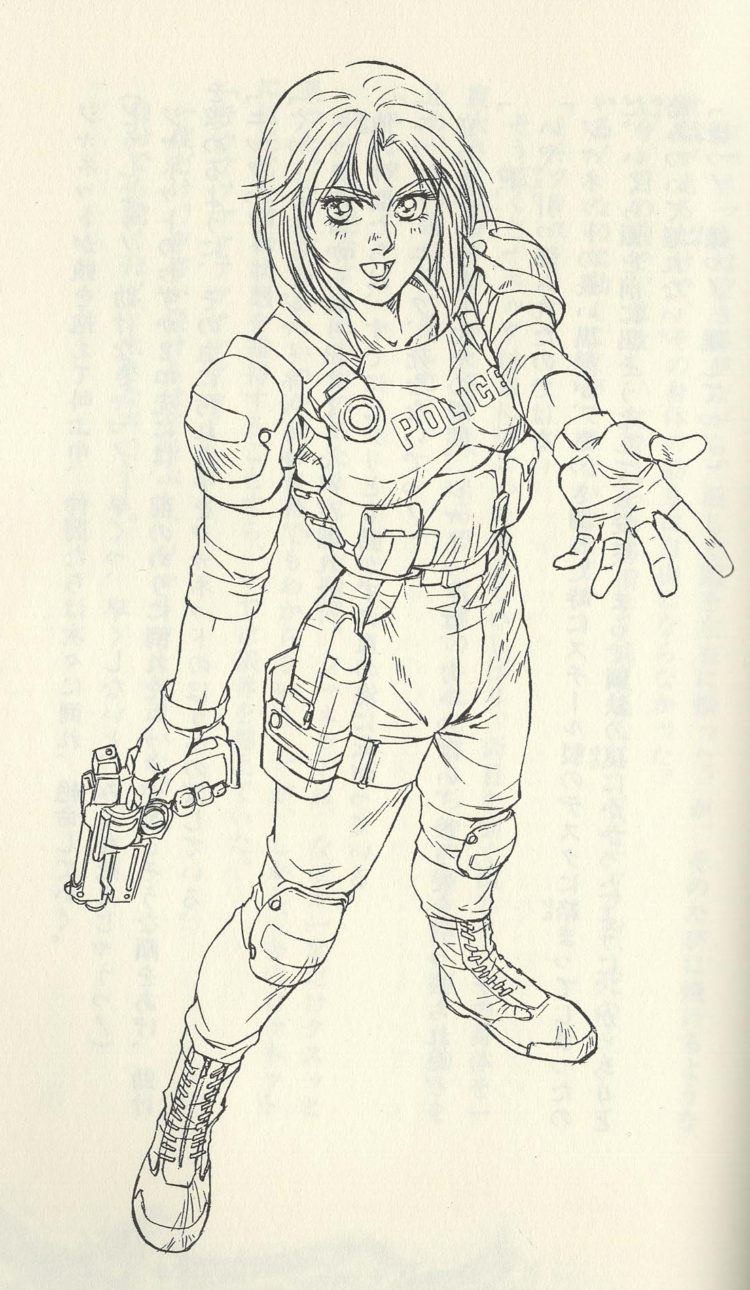
I was lucky enough to get a job as a graphic designer for video games. (laugh).
Virtua Cop became one of SEGA’s popular arcade titles since 1994, what was your reaction to its popularity back then and how do you feel now about it 30 years later?
AH: At the time, I was just so happy to be able to produce the gun shooting game I wanted to try. I think I did my best in my own way. As a staff member of the team, I am still very happy and proud that the title we were able to create was highly rated and became a series.
When designing the characters and setting for the Virtua Cop series, were there any media that influenced you in your work on these games like films, television, and animation?
AH: That’s already influenced by a lot of different places. (laughs) I especially like the buddy cop genre of movies and TV series, so I wanted to reflect that atmosphere in the VC.
According to an interview on the Virtua Cop 3 official website, the original premise for Virtua Cop 3 was to feature two new characters alongside the original three protagonists as veterans, was there any reason the original story was scrapped in favor for the story of VC3 we have today?
AH: I don’t remember exactly how it happened, but I think it was a lot of trial and error. One of the ideas was to have a new character as the main character. I think it was one of the ideas.

I remember that the idea was to have Smarty die in the line of duty and a new character take his place. As a result, the main characters from the previous game continued to be the main characters, which was a relief for me personally.
Vanessa from Virtua Fighter was originally planned to be in Virtua Cop 3. What was her role in the story and why did she get cut?
AH: The idea was to introduce a new main character, and “Vanessa” was to be a buddy of the new character. Vanessa” was to be a buddy of the new character. I think it was Yu who came up with the idea of “Why not use Vanessa?”
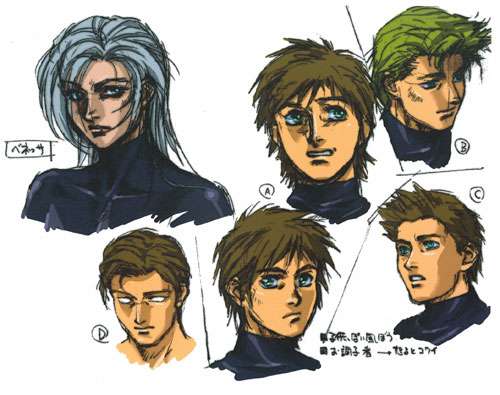
I think it was Yu who came up with the idea of “Why not use Vanessa? I think it was difficult from a planning standpoint to use a VF character as the main character in the VC.
With the emergence of consumer VR, which is an ideal platform for on-rails gameplay, do you believe we’ll eventually see the return of gun shooters?
AH: I would love to see it come back. I would love to play it in VR too.
What kind of hobbies do you like to do in your free time? You seem very fascinated with guns?
AH: I enjoy going to events from time to time where I can reconnect with friends and acquaintances who share the same interests. I like military and toy-related conventions.
Out of all the SEGA characters you designed within SEGA AM2, which one is your all-time favorite? Is it Janet?
AH: I have a personal attachment to all of the characters in the titles that I have participated in designing.
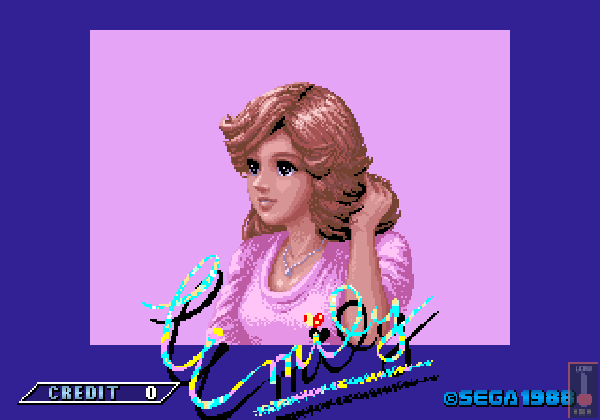
Janet is one of them, of course, but “Emily” (POWER DRIFT), the first character I worked on after joining SEGA, is also very memorable.
Do you play video games? What are your favorite regular and SEGA games?
AH: I rarely play video games except for work.
What were your favorite TV shows and anime while growing up as a child? Do you watch them to this day?
AH: I watched and liked a lot of anime from the 80s and 90s. I especially love Leiji Matsumoto’s animations. I am a big fan of the movie “Galaxy Express 999. I was fascinated by “The Warrior’s Gun – cosmo dragoon”. (laugh).
What advice would you give to the younger people who would want a career in their line of work?
AH: I am not in a position to give advice, but I can say from my experience that it is really important to try various opportunities. This will increase the possibility that it will lead you in the direction you want later on.
Is there anything you would like to say to SEGA fans who still cherish the classic games you have worked on within AM2 after all these years?
AH: I am very happy to have been able to do a job that will remain in your heart. Thank you very much.
Yumiko Miyabe Interview
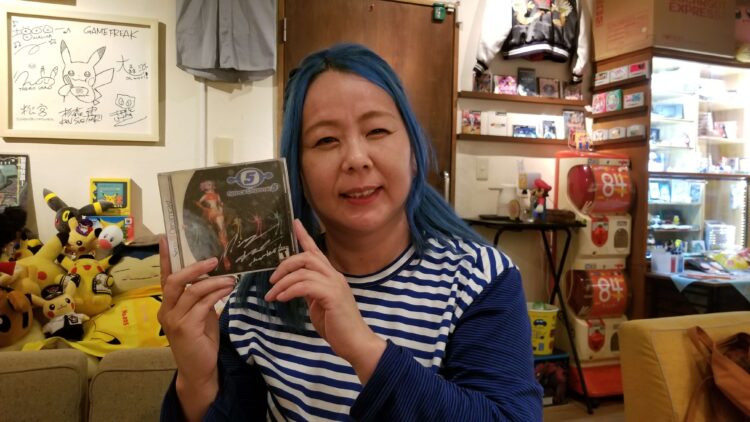
Could you introduce yourself by name?
YM: My name is Yumiko Miyabe, I’m a designer. I’ve been in game development for many years and while I am currently freelancing at various game companies helping with game development, I also host a toy brand called Space Sofubi Dan. I am based in Nagano Prefecture.
What were your hobbies and goals before joining the video game industry?
YM: When I was in high school, I was in the art club and contemporary music club. I was actually in 2 band clubs where I played the guitar. I was baptized by Punk Rock, so I was playing music with just 3 chords like the Sex Pistols and others. I worked hard at design in the art classroom. Outside of school I was obsessed with Tokyo’s subculture. At that time there was an Indie band movement in Tokyo where I gathered news about it from magazines and rumors I heard from neighboring schools.
What inspired you to become a designer?
YM: As I mentioned, I was playing in bands and researching punk fashion but as I lived in rural Nagano Prefecture, I had a very strong longing for Tokyo. So, I was thinking “How can I come up with a good reason to move to Tokyo” when I was a high school student and thought if I told my parents I wanted to go learn at an art school in Tokyo that they would agree. In other words, I had a wicked young idea wanting to become a designer equaled wanting to go to Tokyo. If my parents didn’t help with money, I wouldn’t be able to do it.
Do you play video games? What are your favorite regular and SEGA games?
YM: After I stopped working for SEGA I didn’t play any games for over 10 years. I’m now playing games again. I don’t really know about maniac things; I mainly buy things my colleagues in the industry say are
interesting. In these two games the confirm and cancel buttons are reversed so every day it I am confused for about the first hour.
How did you join SEGA? What was the experience like when working there in the beginning?
YM: When I was an art university student in Tokyo, I was thinking I wanted to become a designer at a well-known big company. I mean I moved very far away from the countryside to Tokyo, so I wanted to have my parents feel as they invested well in me. In other words, I wanted to be true to my parents. When I was job hunting, I applied to advertising agencies and publishers and SEGA was among them. The only game company I applied for was SEGA. Why only SEGA? Because it’s a cool company. At that time in the eyes of the Japanese it was as if Sonic was re imported from the USA that even the shops in my favorite subculture was selling Sonic goods. I was playing Sonic on the Mega Drive of course. I was also impressed with other games like Ecco the Dolphin. Do you see what I like? I’m joking.
But I think you are able to understand the atmosphere. I just like cool stuff. Then I was given a job offer from Sega and was very happy to start working there. When I started working there the office was lively as it was the year the SEGA Saturn had just launched. I heard from my boss Sony is making a game console and thought “what?” That’s the Sony Walkman company, right? Why? Everyone at CS1 research division was shocked. In the CS development department, there were separate production departments for consoles. I was full of energy I jumped at the name “1” that I requested CS1 Research and Development Department, that I
was assigned to it.
When I was assigned, my direct superior was Oshima Naoto. I think it was especially worth mentioning. I had meetings and lunches with the beloved creator of Sonic. My head felt fluffy and dreamy. I was once warned, “Are you listening?”
Shortly after joining Sega, you worked as a CG movie artist on NiGHTS into Dreams, a popular Sega Saturn title created by the Sonic Team. What was the process of expressing the world of NiGHTS into
Dreams in motion on the Sega Saturn?
YM: When NiGHTS was in development, I was sitting in the movie team’s seat about 10 meters away from Sonic Team, it was a very big room, I didn’t really have any opportunity to see up-close the creation of NiGHTS. My movie team created a high polygon movie for each scene. I think it was very exciting for me as a newcomer to draw storyboards that were used as is for a movie. Also, I feel it gives a sense of Sega’s youthfulness of overall development.
What was the concept for Space Channel 5 and how did SEGA plan to market it as a title for the SEGA Dreamcast?
YM: I heard that Space Channel 5 was started mainly by Sonic’s rival Knuckles designer Yuda-san. There are 3 founding members. Of the people from Space Channel 5, Yoshinaga-san is the planner who manages
the IP to this day, and Tomoko Sasaki-san is a very famous composer amongst SEGA fanatics. The original proposal was created by the 3 of them Yuda-san started working behind the scenes in SEGA. It was very like Kurosawa’s 7 Samurai, each person, we gathered members beyond the boundaries of development departments who sympathized with the proposal. Also, when Tetsuya Mizuguchi-san finally joined the AM Department, I thought wouldn’t this become something big? It felt like a premonition. During the development of the Dreamcast, SEGA began to think they wanted not just the SEGA fans but also a wide range of general consumers to buy SEGA games.

It wasn’t all games, but some titles we were allowed to freely create, therefore the upper management decided that Space Channel 5 would be under that intention. We started changes starting from the staff environment. I think developing this game in an exciting location like Shibuya had very good results.
You were the original character designer for Ulala, Pudding, and many iconic characters from the franchise. What were the inspirations for the characters, the setting, and which one was your favorite to design?
YM: Director Yuda-san gave us a simple concept for character design. Not to mention Ulala, we are starting from a place where something like Space Channel 5 doesn’t exist. At first, he told me to design a character based off the concept of a main character called Fujiko Mine who isn’t really flattering to men. However, not flattering is a very strong keyword and I wanted to draw an independent woman. Since the theme was retro future, I watched movies like Barbarella as a standard. I think around that time Luc Besson’s The Fifth Element may have been released around that time. However, I wanted to create an original expression suit was a series of trial and errors. Since I love Star Trek, Sci-Fi like things weren’t an issue for me but I spent about a half a year making a female protagonist.
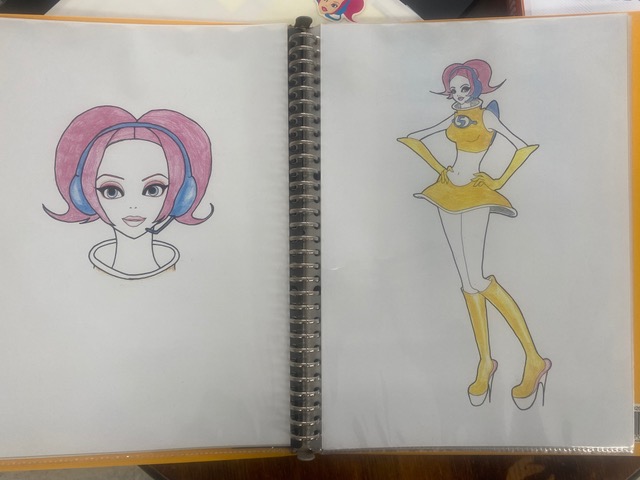
During that long period, Ulala appeared little by little like a coral reef. Currently I don’t design on such a luxurious schedule so I don’t think it would be much help to you all. On the other hand, it now looks like Space Channel 5, a style was created as a kind of common understanding. As it was created as an Icon, that part was made with science fiction themes I was able to contribute a little to the people, I think.
How involved was Michael Jackson during the development of Space Channel 5? Did he choreograph the dances for his segments in the game, and what inspired Space Michael’s costume design?
YM: Executive Producer Utsumi-san brought this project back from the USA. At the time I received a message on my cellphone when I was riding a taxi together with Utsumi-san. There was a phone call from Michael and Utsumi-san said “oh, Michael? Hello what’s happened? I’ve seen such casual conversations. There are articles everywhere about Michael being a character in the game which is true. I somehow fit into the final stage of development.
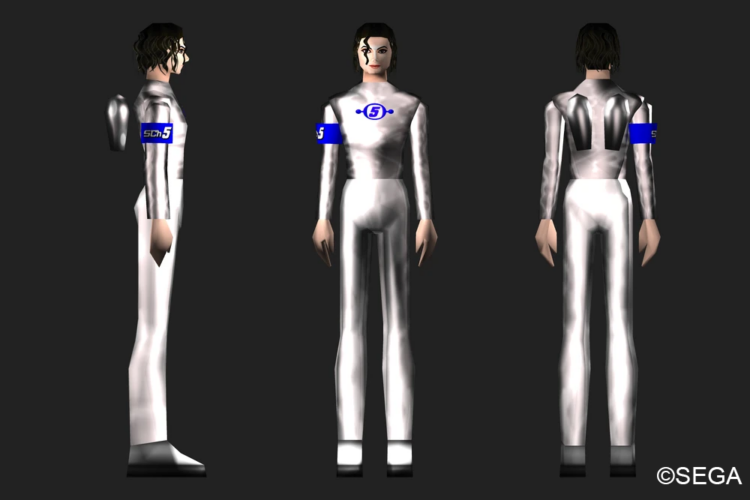
When it came to costumes because Michael was a master of creating a truly diverse look, we studied a lot of music videos. I think the famous music video Scream is the closest image of Michael, but it was created according to design principles of Space Channel 5. Strangely enough, Michael Jackson’s performance that was shown at Disneyland was also musical and there’s an affinity for this game isn’t there?
Could you tell us how you became a sofvi maker and how the Spacesofvidan online store came to be? What was the process of creating those cute little Ulala statues?
YM: When I left SEGA around 2015 it had been a long time since I returned to the countryside. I suddenly received a Facebook message from SEGA’s Yoshinaga saying “would you like to make a PVC figure of the
Moraliens?” It was my birthday. Yoshinaga-san is a very stylish person. From there we started making the Indy PVC figure. I was taught process and technology by an expert in the field after that I kneaded, clay and created the prototype. It took me about a half a year to model the Moralien. After that I thought I wanted to make an Ulala figure which was a very difficult shape. I tried many times, but I wasn’t satisfied. It’s my lack of skill.

So, I asked my creator friend Tanaguchi Ryo-san to make a prototype for me. He’s the person who designed the 2020 Tokyo Olympic mascot characters. As a sidenote he studied art as an exchange student in the USA. Taniguchi-san created the current Ulala PVC figure prototype in about 1 week. Although it was very different from my style, I respect other creators, so I let him finish it as it was. Since we did everything from painting the PVC figures to shipping, we can’t become big distributors as we can’t make so many. We created 2 online stores, one for Japan and one for overseas. The reason we made the overseas market site is because I thought Space Channel 5 was more well known overseas. However, since the Coronavirus pandemic, shipping costs became very high, so we are unable to add any items. This will have to be resolved in the future.
There is a Space Channel 5 movie adaptation in the works by Picturestart. With the success of the Sonic the Hedgehog movies, what are your thoughts on a Space Channel 5 film adaptation and what would you like to see appear in the movie?
YM: I think for it to be made into a movie in America is not just a single goal but the most valuable culmination of all efforts. Since I am no longer with SEGA, I am fantasizing things as a fan. What kind of actor will play the role, and will it be a live action? Or CG? I really don’t know but it’s a very dreamy conversation. I feel honored from the bottom of my heart. This means I’m in the same position as all my colleagues that were involved with Space Channel 5.
What advice would you give to the younger people who would want a career in their line of work?
YM: Is it ok if I only know things about designers? Nowadays when you look at Twitter, you see a lot of good illustrations coming from it. Young people can access any manual whenever they want so technically, they are much better off than we were in the past. On the other hand, it also becomes as enemy as you can lose confidence by seeing too many good images.
Only the inside of my head vastly swells up, I don’t think there’s enough physical stimulation. I want them to go outside and design with a pencil drawing of landscapes and animals. I remember what a sculptor named Rodan said long ago, it is said that if you are lost the answer is in nature. Please look at the shape of a mountain. Shapes of clouds, flower color schemes, and other things like curves. When it comes to making games, you have to be interested in many genres. You can’t choose what team you will be assigned to. And more than anyone else immerse yourself in it, it is the most enjoyable thing.
13. Is there anything you would like to say to SEGA fans who still cherish the classic games you have worked on after all these years?
Firstly, this was made as a team by everyone so it’s not my honor. I always tell myself this. I just happened to be in charge of the visible part of the design, so I am very grateful to be invited to your
interview. With that in mind, thank you everyone. When the fans say the words SEGA and Space Channel 5, they have a wonderful smile. I’ve seen many people shed tears from memories of that time. came back to
them. It’s because you have good sense and wonderful sensitivity. I want to say that you are wonderful.
Ad:

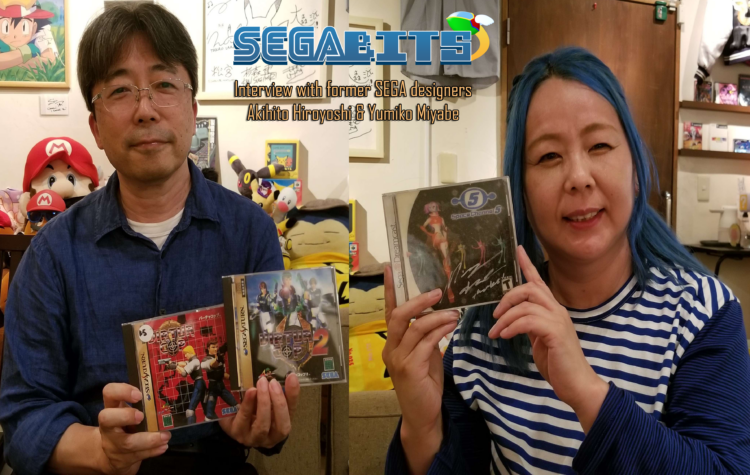
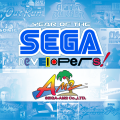
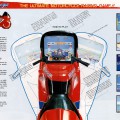
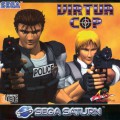

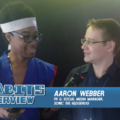
Wonderful interviews! Thanks for doing them. I didn’t know these designers by name before, but I have admired their work all along.
awesome interview! thank you both for all your work on Sega games; I have loved aspects of all the works! thank you!
I’d love to see more content like this, even though you didn’t use any of my excellent questions.
Credit to those whose questions you did use might have been appropriate.